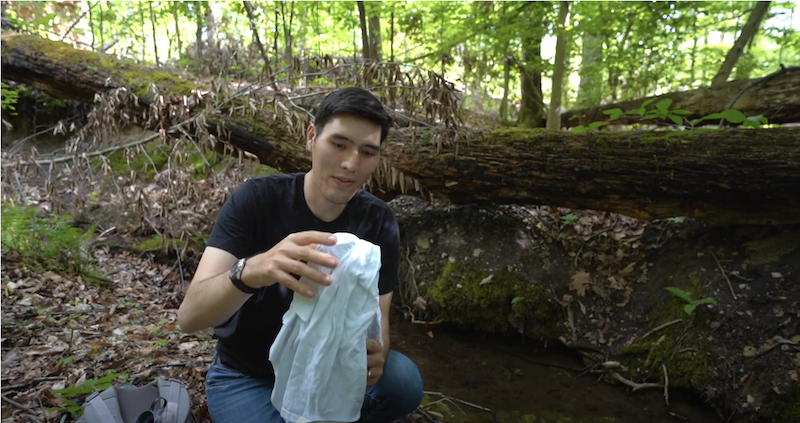Whether you’re camping, bowhunting the backcountry, or surviving unexpected situations, water is a necessity. Your body is about 60% water. Going three days without it leaves you dangerously dehydrated, and you won’t survive over seven days without a sip.
People should drink at least two to three quarts daily, but you might need more when active and perspiring. Three quarts of water weighs about 6.5 pounds, which means a four-day supply weighs about 27 pounds. Carrying that much water isn’t practical, so you must know how to purify it.
Even water from crystal-clear mountain streams need treatment. Streams can carry a host of pathogens. Giardia and cryptosporidium are common. If you’ve never had them, keep it that way. You don’t want them.
You have several options for making water safe, including filters, purification tablets, UV light, and boiling.

Filters eliminate debris, but not bacteria and viruses. Photo Credit: ATA
Pass dirty water through a filter, and clean water comes out. Some models use a pump while others use gravity to push water through the filter. Filters produce great tasting water with little effort.
The downside is that filters don’t screen out viruses, which can be an issue if you want to filter water where hepatitis A, rotavirus and norovirus are concerns. Filters also freeze in cold weather, and clog when used in extremely silty water.

Tablets are portable and can easily be carried in a backpack. Photo Credit: ATA
Water purification tablets easily make water drinkable. Just add the proper number of tablets for the water volume and wait for them to purify it. Common active ingredients are iodine and chlorine dioxide. Their downside is that they give water a chemical flavor. Their chief advantage is that they’re lightweight and don’t require batteries or a fuel source. That makes them excellent for survival kits.
Pro tip: When using purification tablets, UV light or boiling, place a bandana over the container’s mouth when filling it. The bandana screens out sand, rocks, silt and other debris you don’t want to drink.

UV light will eliminate bacteria. Photo Credit: ATA
UV light can make water safe to drink by just pushing a button. These UV devices are wands that you insert into a water bottle and stir for 90 seconds. UV light treatments kill pathogens, but your water can still look dirty because UV light doesn’t filter out mud or debris. Depending on the source, your water might not look good or taste good, but it won’t make you sick. When possible, get water from running sources to avoid sediment.

Boiling water is a trusted way to kill bacteria, but follow the guidelines for your specific altitude. Photo Credit: ATA
Bringing water to a boil kills pathogens in just minutes, but water’s boiling temperature changes with altitude. Water boils at 212 degrees at sea level, and kills all pathogens instantly. Water boils at 193 degrees at 10,000 feet, and should boil for five minutes to ensure safe drinking.
Boiling is a great way to ensure your water is safe, and many backpack hunters already boil water daily for coffee and dehydrated meals. The downside is that boiling all your water during multi-day hunts requires lots of time and fuel.
When planning remote backpack hunts, choose campsites near water sources. Depending on snowmelt and weather, streams you find on maps or aerial photos might not be there when you arrive. Plan for that by locating alternative sources.
Cross-contamination is always a concern. If you dip your water bottle into a water source, the lip of that bottle holds contaminated water. Caps that unscrew with a drinking spout offer an easy way to avoid cross-contamination. Carrying a clean water container and a dirty water container is a good way to avoid cross-contamination.
The method you choose to make safe drinking water comes down to personal preference and where you hunt. Just be sure to drink plenty of water, avoid cross-contamination, and be prepared with a backup purification method.